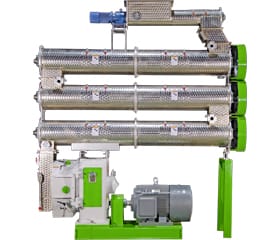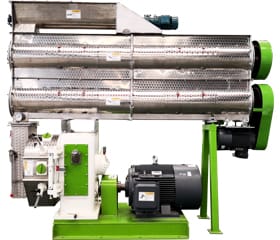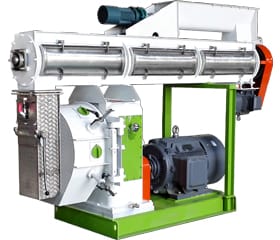Benefits of fermented feed for cattle and feeding methods
After the cattle feed is fermented by beneficial bacteria, the feed contains beneficial bacteria, which can change the microbial environment of the cow's intestine in the cow's intestine, which is easier to digest and absorb; the feed contains beneficial bacteria, which increases the disease resistance of the cow To reduce the occurrence of diseases and the use of antibiotics and other drugs in the breeding process.
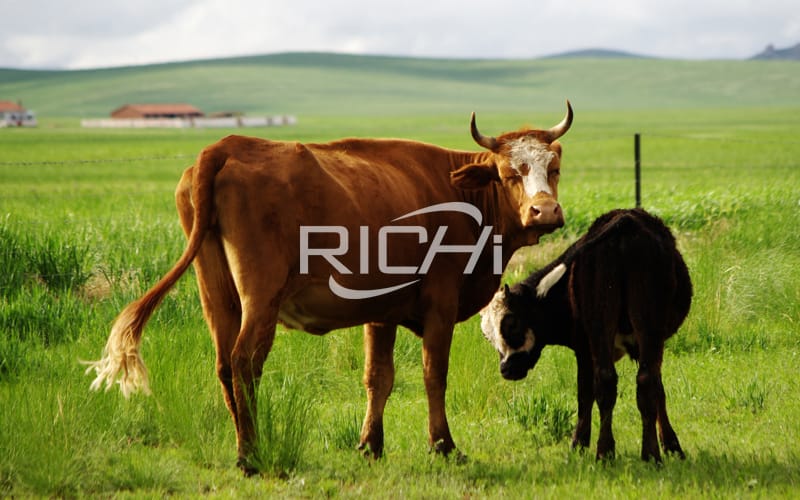
The most common fermented feeds mainly include cassava dregs, straw processed feed, cottonseed rice dumpling cake meal (such as palm meal, soybean meal, cottonseed meal, rapeseed meal, camellia seed cake, castor bean cake, etc.), animal waste, and water fermentation Feed, fungus bran processing feed, powder residue vinegar residue sauce residue fermented feed, fruit pomace, lees, silage, biological protein and peptide, rice bran and other bran.
1. The benefits of fermented feed for cattle breeding
(1) After the feed is fermented by beneficial bacteria, the feed contains beneficial bacteria, which can change the microbial environment of the cow's intestine in the cow's intestine and be more easily digested and absorbed;
(2) The feed contains beneficial bacteria, which increases the disease resistance of cattle, reduces the occurrence of diseases, and reduces the use of antibiotics and other drugs in the breeding process;
(3) The feed contains beneficial bacteria. After the feed is digested and absorbed by the cow's gastrointestinal tract, the excrement excreted has no odor;
(4) After the green feed is fermented by beneficial bacteria, it will not spoil and deteriorate, which is convenient for mass storage and batch extraction;
(5) By-products of various crop processing by fermentation by beneficial bacteria can be converted into fodder for cattle, and at the same time, it can prevent spoilage and deterioration, which is convenient for mass storage and batch extraction;
(6) Fermentation of various crop processing by-products into feed can greatly reduce the cost of feed purchase, thereby reducing breeding costs and creating more breeding profits;
(7) After feeding fermented feed, the excrement from the steak is more likely to promote the biogas production of the biogas digester;
(8) After fermentation of various green, roughage and crop processing by-products by beneficial bacteria, it can be stored for a long time, which can maintain the nutritional balance of cattle feed;
(9) By feeding fermented feed, the use of antibiotics and other drugs is reduced to meet the requirements of organic farming;
(10) Through recycling, using biotechnology of beneficial flora, combine breeding, planting and environmental pollution control to create new wealth growth points and achieve harmonious breeding and planting.
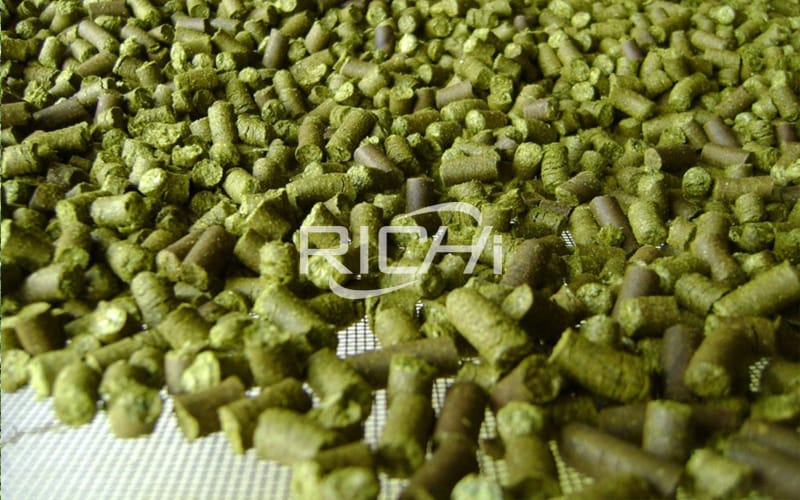
2. Green, roughage and crop by-products that can be used for fermentation
Fermentation of cultivated legumes, gramineous grasses, crop processing by-products, etc. with Nongshengle feed starter, first, it is convenient for storage; second, it can greatly degrade crude fiber, improve feed conversion rate, while producing a large amount of biological substances , Improve the digestion and absorption of cattle feed. The third is that after the decomposition and transformation of beneficial bacteria, it can replace most of the concentrated feed. The feed is fermented by beneficial bacteria, so as to achieve a feeding method based on rough feed and supplemented with fine feed. The green and roughages suitable for fermentation by beneficial bacteria are roughly:
(1) Green feed
Cultivated pastures such as alfalfa, asparagus, vicia, Sudan grass, elephant grass, ryegrass, king bamboo grass, etc.; leafy vegetables include by-products of crops and vegetables, such as sweet potato vines, green corn, Huaishan vines, etc.; leaves There are elm, poplar, willow, hazel, mulberry, locust tree, etc.; aquatic plants include water lily, duckweed, etc.
(2) Rough feed
Natural grass or cultivated pasture, fermented and stored by beneficial bacteria after cutting; straw feed commonly used are straw, corn straw, wheat straw, straw, bean straw, sorghum straw, etc.; shell feed includes chaff, sorghum shell, peanut shell , Pods, cottonseed hulls, grains, corn cobs.
(3) By-products of crop processing
Such as beer grains, lees grains, vinegar grains; beet pulp, bagasse, sugar dregs; tofu dregs, cassava dregs; persimmon skin, pineapple skin dregs, horseshoe skin dregs, citrus peel dregs; chrysanthemum dregs, Chinese medicine dregs; litchi shell core, mango Leather core; sweet corn bract, sweet corn cob, etc.
3. The benefits of feeding fermented feed on biogas fermentation
(1) After the feed is fermented twice, the drawn cow dung becomes finely crushed. This kind of cow dung becomes a good meal for methane bacteria in the biogas digester. Feeding fermented feed makes cow dung easier to ferment, accelerates decomposition, and methane bacteria become more active, resulting in increased gas production.
(2) Fermented feed contains beneficial flora, which can change the microbial environment of cattle intestines, increase the disease resistance of cattle, reduce the occurrence of diseases, and reduce the use of antibiotics and other drugs in the breeding process . In this way, antibiotics are prevented from entering the biogas digester with cow feces, which is more conducive to biogas fermentation and gas production.
(3) Use special microbial fungicides to disinfect the cattle farm, no longer use chemical disinfectants. Once the chemical disinfectant enters the biogas digester, it will also kill the methane bacteria like antibiotics, thus affecting the normal gas production of the biogas digester. The use of microbial fungicides has greatly improved the environment in the biogas digester, which can ensure that the biogas digester can normally produce gas by fermentation.
(4) Biogas slurry and biogas residue are re-fermented and converted into bio-organic fertilizer
From the first fermentation of the feed to the second fermentation of the feed in the cow's stomach; the manure of the cow enters the biogas digester, and microorganisms such as methane bacteria further decompose the cow manure and ferment it three times to form biogas residue and biogas slurry. The fermentation of biogas residue and biogas slurry is the fourth fermentation. Therefore, in this bio-organic fertilizer, the beneficial microbial flora is diverse, and together they form a beneficial microbial community.
Using different beneficial bacteria groups to decompose and ferment biogas residue and biogas slurry again, this can not only increase fertilizer efficiency, but also produce different types of bio-organic fertilizer according to different uses. The heavy metal content of this bio-organic fertilizer is almost zero. This new type of bio-organic fertilizer, one can increase production, two can deworm insects, three can control diseases, especially fungal diseases.
4. A common cattle feed formula and feeding of fermented cattle feed
(1) Recipe
600 grams of rice, 400 grams of rice, 200 grams of dried cooked vegetables, 3000-4000 grams of green fodder, 1500 grams of rice bran, 250 grams of soybeans, 150 grams of cornmeal, 200 grams of bone meal, 150 grams of brown sugar, and 1500-2500 grams of wheat bran.
(2) Production of fermented cattle feed
Mix rice bran, wheat bran, cornmeal, bone meal, brown sugar, cooked vegetable dry, green fodder with water, mix well with hand kneading, finger joints do not drip water after squeezing, and then pile up, press ferment, wait for fragrance Feeding. Add cold water in summer and heat water in winter. If the temperature is low, add a film to keep warm.
(3) Feeding method of fermented cattle feed
Boil rice into porridge, fry soybeans and rice until 8 mature, then beaten into powder, mix and feed with fermented feed, feed 3 times a day, and increase or decrease the green feed according to the eating condition of raw cattle.
【Key Case】Factory price 12t/h cattle feed pellet processing line plant in United States
If you want to know more information about "cattle feed formula",, "How to process cattle feed", "cattle feed pellet making machine", "cattle feed hammer mill", please continue to follow Richi Machinery official website:https://www.richimachinery.com/,or contact us by Email: enquiry@richi-machine.com, Whatsapp/Cel: +86 185 7410 3366
If you want to built one complete pellet production line in your country, pls send the inquiry to us. We will customized design according to your requirement.

